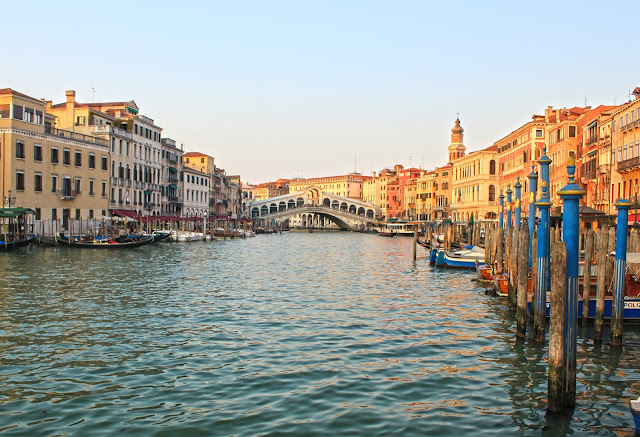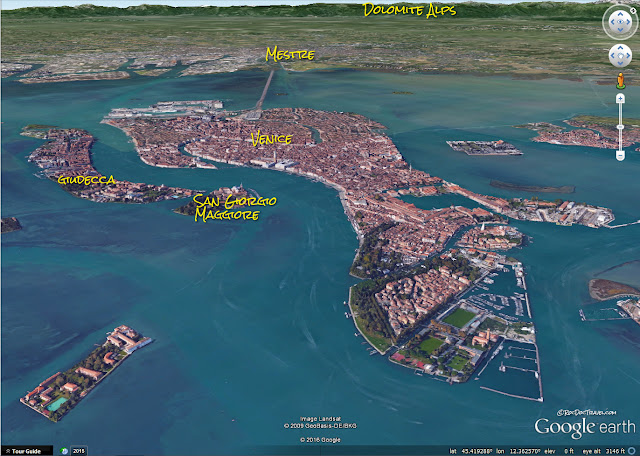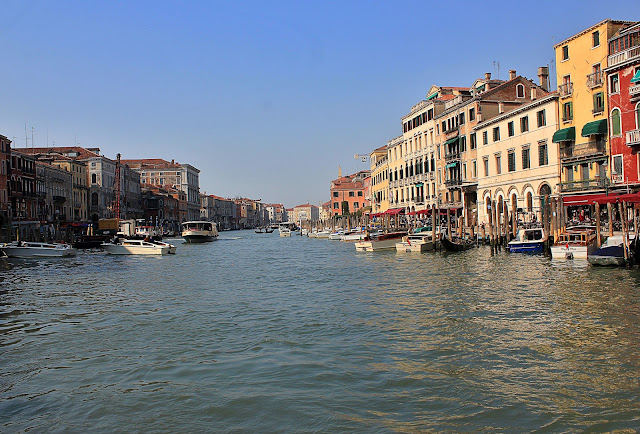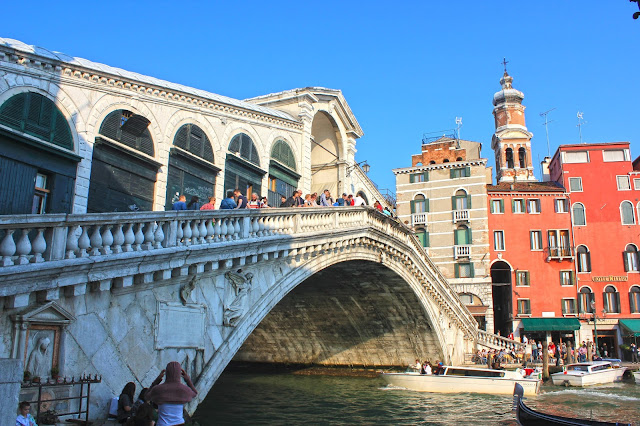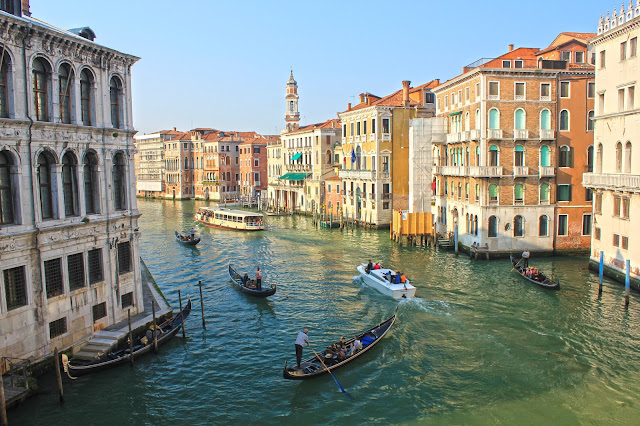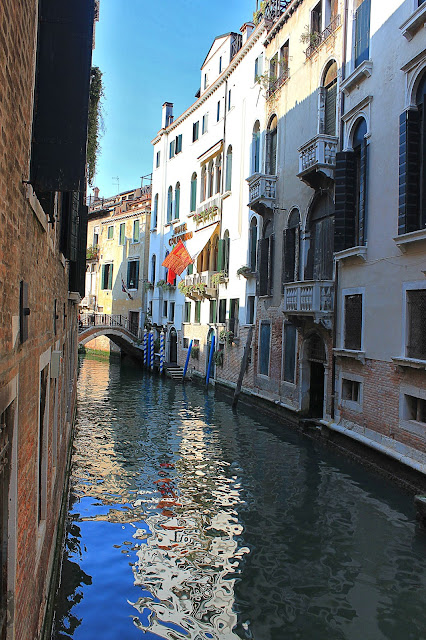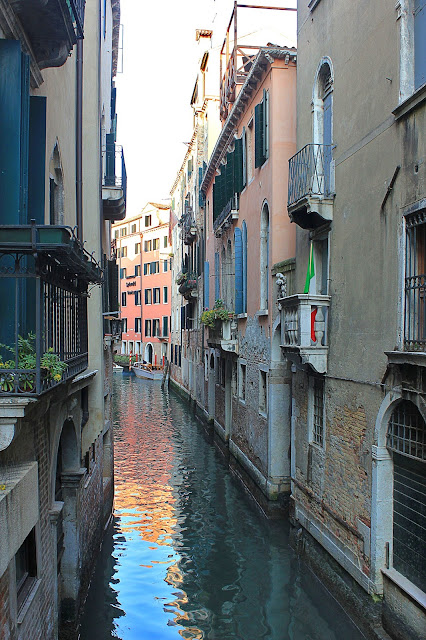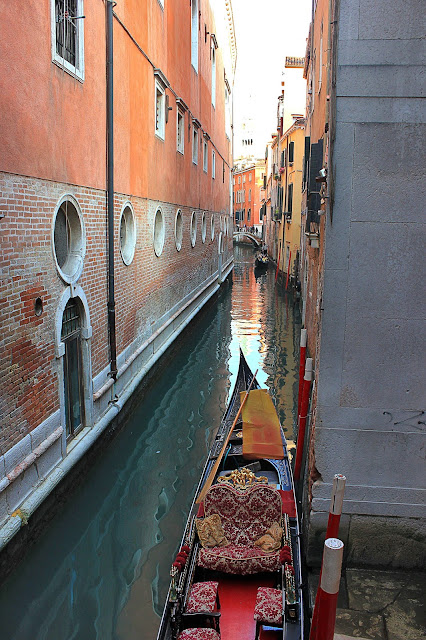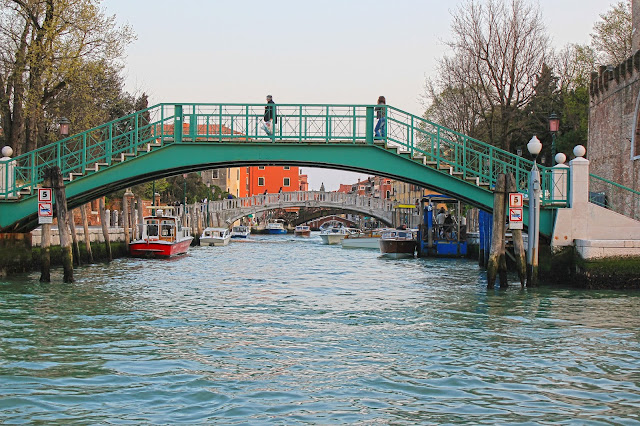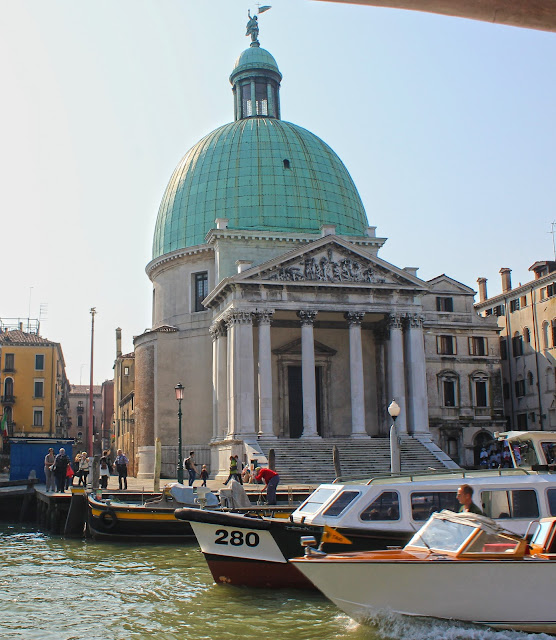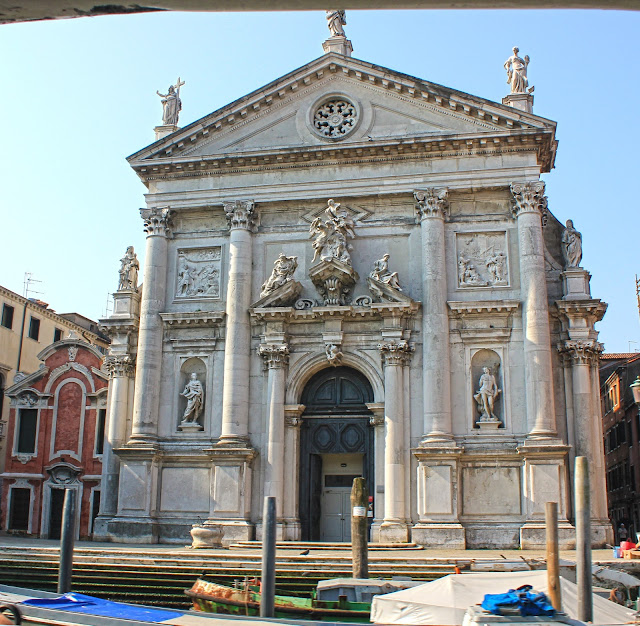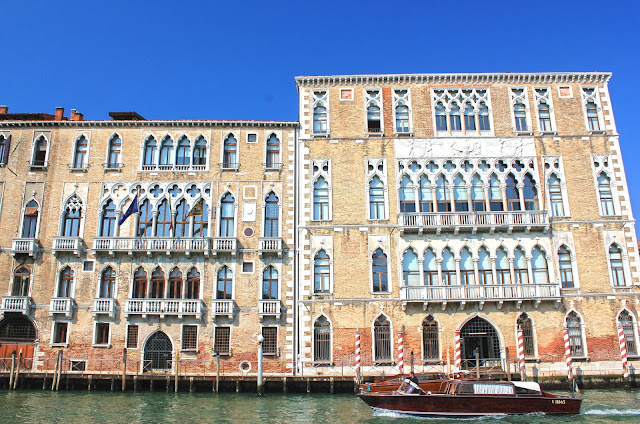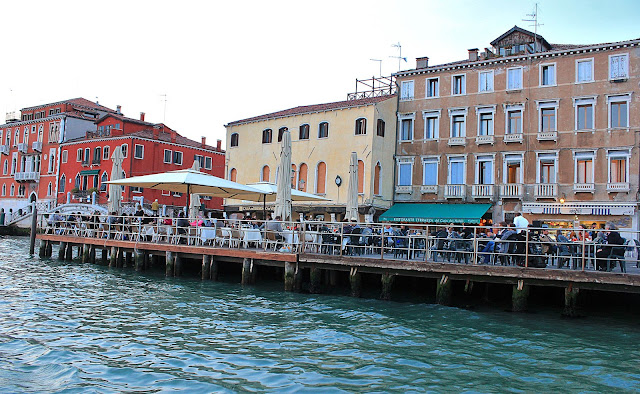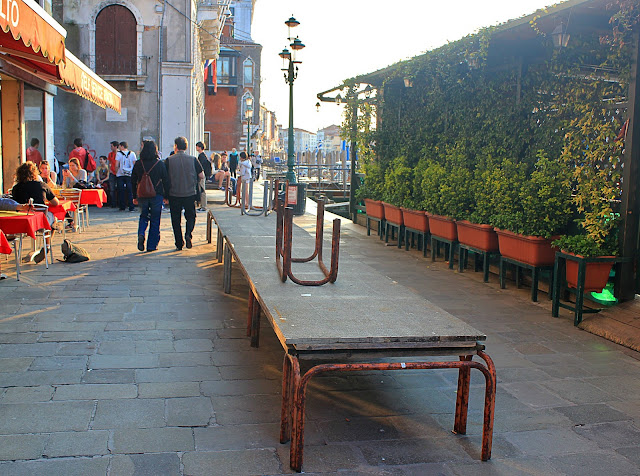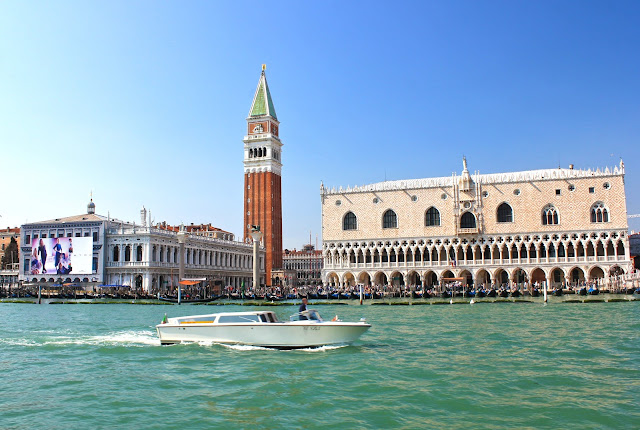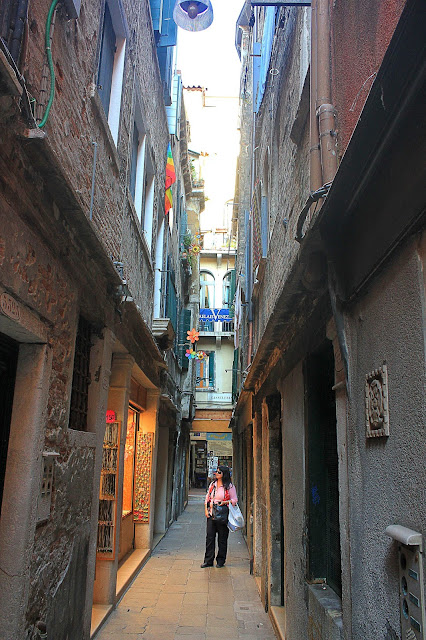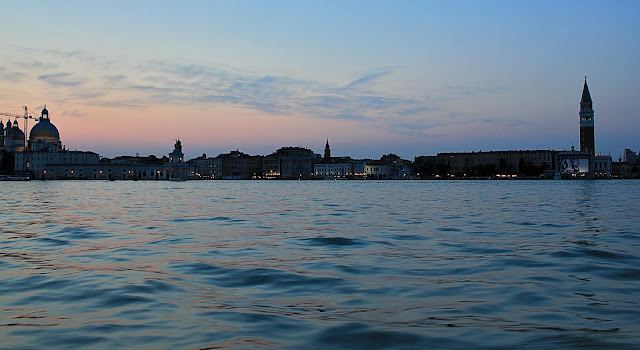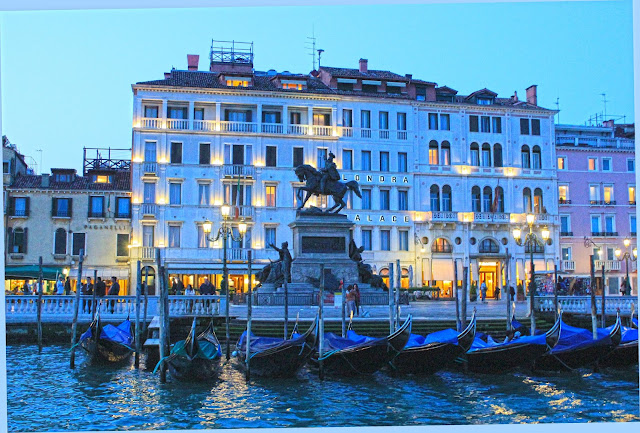Venice
Venice, Italy
Isn't it about time you checked this one off your bucket list? Visit Venice, Italy and see how one of the world's most beautiful and historic cities lives with subsidence and perilously high tides.Why Visit Venice?
If this isn't the dumbest question on this blog, I don't know what is! Venice has incredible history, amazing art, fabulous architecture, stunning scenery, and a unique, ongoing geologic story.(Above) Venice is built on islands in a shallow lagoon. The "Mose" project is designed to keep high ocean tides out of the lagoon and protect the city.
I went to Venice to study the Mose flood control project and the effects of subsidence, so I'll do this post in two parts -- part 1 is the city, and part 2 is the flood control project and the lagoon.
Brief History of Venice
Venice was founded in the 400's by communities trying to escape violent invaders from the north, including Attila the Hun. They cleverly built towns on the mud flats of the lagoon, where they remained relatively safe. The population continued to grow for the next 4 centuries as a haven from political and military strife on the mainland. In the meantime, Venice grew as a trading and naval power. They elected the first "Doge" (or Duke) in the 700's. In 828 the body of St Mark was smuggled from Egypt to Venice, and he became the patron saint of the city.In the 1100's and 1200's, Venice became involved in the Crusades by providing transportation via its substantial fleet. This got the Venicians involved in politics, military campaigns, and trade in the eastern Mediterranean. In 1204, aided by Crusaders, they sacked and looted Constantinople. You can still see the four bronze horses and other items they brought back to St. Mark's basilica. By the 1400's, Venice ruled lands all along the Adriatic to Crete and Cyprus and was a wealthy nation.
The Plague disastrously swept through the city several times including in 1348 and 1630, and severe quarantine restrictions were placed on anyone wishing to enter the city.
Venice began to lose power in the 1600's when the focus of world trade shifted away from the Mediterranean and toward North and South America. Art, opera, and wealth continued to flourish, however, and Venice grew in cultural influence even as its political influence dimmed.
Venice was ruled by Austria from 1815 to 1866, when it joined the new nation of Italy.
I like this web page for its brief summary of a complex story: A brief history of Venice
Muds and Floods at Venice
From its earliest history, Venice was constructed on a foundation of logs driven vertically into the mud. Friction between the logs and mud makes them able to support great weight, and the oxygen-free environment in the mud prevents decay. Similar construction methods are used today to support structures on soft ground -- in fact, the identical method has been used for centuries in New Orleans, Louisiana, which is built on similar mud.Venice is actually a collection of islands gradually built together.
For decades, groundwater was pumped from under Venice and the surrounding lagoon for the city's water supply. This caused the subsurface sediments to compact, causing the city to subside. In addition, the tremendous weight of Venice's stone buildings causes compaction and subsidence. Subsidence has made Venice highly susceptible to high tides.
To try to remedy the situation, groundwater pumping was stopped, and lagoon water was instead pumped into the underground aquifers. This slowed the subsidence, but did not stop it.
Venice continues to be plagued by high storm tides from the Adriatic. The controversial solution was the "Mose" (Moses) project, begun in 2003, to construct 78 giant gates at the island inlets to the lagoon (see my maps). Additionally, the islands and lagoon have been reinforced to prevent erosion damage from storms. The gates are designed to rise from the seafloor and keep out a tide of up to 3 meters. The project is projected to cost 5.5 Billion Euros and be completed in 2018.
Travel to Venice
Time: One day would give you the barest taste of all that is Venice. Three days would be enough to see the island, museums and churches, and experience the outdoor restaurants and boat life.Lodging: To save money, you can stay on the mainland at Mestre, which is a quick bus or train stop away and considerably less money. If money isn't tight, shop around and enjoy the island!
Food: Food is expensive in Venice, so take the time to shop around the travel websites for the best recommendations. Some places are just plain tourist traps, but they are called out on the travel websites.
Admissions: The city has started charging an entrance fee during crowded times. Most of the popular sites, including churches and museums, charge an admission fee. Save time and money by buying museum and travel passes online. Click Here.
Considerations: At high tourist season, especially August, Venice is quite crowded, especially when the cruise ships disgorge their hordes. That can take away from what should be a peaceful, lazy feast for your senses. Plan accordingly.
Tip1: Wander. Venice is a maze of narrow streets and alleys and hidden piazzas full of delightful scenes and surprises, so spend your time exploring instead of following the herds. If shopping is your thing, fine, you'll find a lot to look at, but you'll miss the real Venice.
Tip2: Boats. You'll see from my pictures how gorgeous and illuminating a simple water taxi ride can be, especially at dawn or twilight. After your obligatory tour of the Grand Canal (it's fabulous!), take boats around the island to San Giorgio, Giudecca, Lido, and Murano.
(Above) View to the northwest. Venice is connected to the mainland at Mestre by a road and a railroad. The eastern Alps, the Dolomites, are visible on a clear day.
Uniquely Venice
Before I get to the Geology in part 2, I'll show you some of Venice's more unique and intriguing sights. If you don't want to hop on a plane after reading this, something is seriously lacking in your life!(Above) When you first get to Venice, chances are you'll get on a water taxi and travel the Grand Canal. So here are some of the things you'll see.
(Above) The Grand Canal is lined with everything from run-down, paint-peeling old wrecks to some of the world's finest mansions. While you're gawking at the gondolas, watch for the classic wooden motor boats.
(Above) The Rialto bridge is the oldest in Venice. The first bridge was built here in 1181, and the stone structure you see here was built in 1591. It has rows of shops on either side of the foot path.
(Above) Everywhere you wander in Venice, you'll come across beautiful scenes like this.
... and this.
...and this!
(Above) There's just no end to the beauty in Venice! The red-white poles are where gondolas tie up. I thought about titling this picture, "People looking at cameras."
(Above) City of bridges. This is at the Ponte della Constituzione.
Scenes along the Grand Canal
(Above) The church of San Stae was founded in the 1000's and reconstructed in the 1600's. The facade was completed in 1709. The church is filled with works by the leading artists of the time, making it one of the must-see sites.
(Above) Venetian architecture is like nothing else on earth. And just look at those wooden boats!
(Above) The Palazzo Da Mula Morosini was built in the 1400's, and is still a private residence.
(Above) The octagonal Basilica de Santa Maria Salute was built in 1631-1681 to invoke blessings after plague ravaged Venice in 1630. It is built on 1.1 million wooden piles, and has a fascinating interior with intricate geometric floor mosaics.
(Above) Dining on the waterfront is as Venetian as it gets.
(Above) We really enjoyed this relaxing spot along the Grand Canal just south of the Rialto Bridge.
(Above) All around Venice, you'll see these platforms. They're used as sidewalks when a high tide floods the city (see next picture).
Here are the same platforms being used during the flooding of November 1st, 2018 (from BBC).
(Above) The tower at St. Mark's Square is the most visible landmark in Venice. This is how it looks on the approach from the Grand Canal. Pardon the garish advertising!
(Above) St. Mark's tower with the library to the left and Doge's Palace to the right. The Doge's Palace is one of the most ornate and historic sites in Europe, and should be high on your list. The Biblioteca Nazionale Marciana (National Library of St Mark's) was first constructed in 1537, and is one of the oldest and most important libraries in Europe.
(Above) St. Mark's Square. During high tides, this fills with water.
(Above) Basilica San Marco, with some unsightly restoration work in progress. The earliest structure on this site was built in the 800's, and today's basilica dates to about 1063.
(Above) Don't miss the incredible details on St. Mark's Basilica.
(Above) In typical Medieval Venetian fashion, these marble and granite columns were pillaged from Constantinople and brought to St. Mark's after 1204 along with statues and artwork.
Now, get away from the touristy areas!
(Above) The real Venice isn't where the crowds gather. You'll find it by wandering the paths and alleys like this one.
(Above) Venice has countless fascinations at every turn!
(Above) I don't even know where this little piazza is or what it's called because we found it by just wandering around! I don't even want to put it on a map for you, so you can wander and stumble across it, too.
(Above) An inviting little restaurant we found in a tiny piazza by just wandering. Just wander!
(Above) This structure was built using ship timbers hundreds of years ago.
The Venice Lagoon
The sole purpose of the next 6 photos is to convince you to take a twilight water taxi ride around the city.
(Above) Santa Maria Salute on the left and St. Mark's tower on the right, viewed from near San Giorgio Maggiore.
(Above) Looking toward St. Mark's from near San Giorgio Maggiore.
(Above) The island east of St. Mark's, viewed from the water.
(Above) San Giorgio Maggiore
(Above) Hotel Londra Palace in the twilight. It's not far east from St. Mark's.
(Above) The tower at the Giudecca Hilton, viewed from the east.
~ Continue to Venice Part 2 ~
Related Posts: Several will have the label "Italy."
Related Websites:
Doge's Palace website
About the National Library at St. Mark's, with a photo gallery
The Mose Project
Italian train system: Trenitalia
St. Mark's Basilica: Basilica San Marco
Venice Passes at TripAdvisor
A good explanation of subsidence at LiveScience
